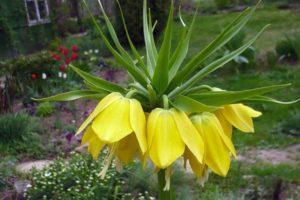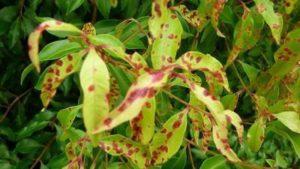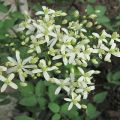Descriptions and varieties of fragrant gladiolus or acidants, planting and care rules
Acidantera is a true child of a distant African continent. She is refined, warm-loving and mysterious. Her appearance evokes vague memories from books I read about great travelers. "Sharp flower" - this is how the inhabitants of Africa called the plant. There was a lot of controversy among Russian gardeners about the correct name of the flower. Fragrant gladiolus or acidander, does it matter? The adorable plant is gaining more and more popularity.
Description of acidants
The exotic plant attracts attention with its tall peduncles. Their height reaches from 1 to 1.9 m. Acidantera flowers are collected in groups and resemble a flock of carefree butterflies. The size of the flowers does not exceed 10 cm. The slenderness of the plant is emphasized by a pair of pointed leaves. Their length is 50-65 cm. Fragrant gladiolus has an unpretentious character.
Types of varieties
Science knows many varieties of acidander. Some of them are popular with flower lovers.
- Acidantera called Tropical. Tall fragrant gladiolus. Plant height reaches 1.1-1.3 m. 5-6 white flowers are formed on a high stem. Each petal is adorned with a raspberry speck.
- Cereal-leaved acidantera. The most graceful representative of the tribe of fragrant gladioli. The narrow leaves are in harmony with the shape of the flowers. The drooping flower heads are distinguished by narrow petals and pink colors. The petals are marked with a purple stripe.
- White. The most fragrant guest in the garden. The plant boasts white flowers and a strong, slender stem.
- Acidantera called Cape. White petals speckled with red streaks are the hallmark of the variety.
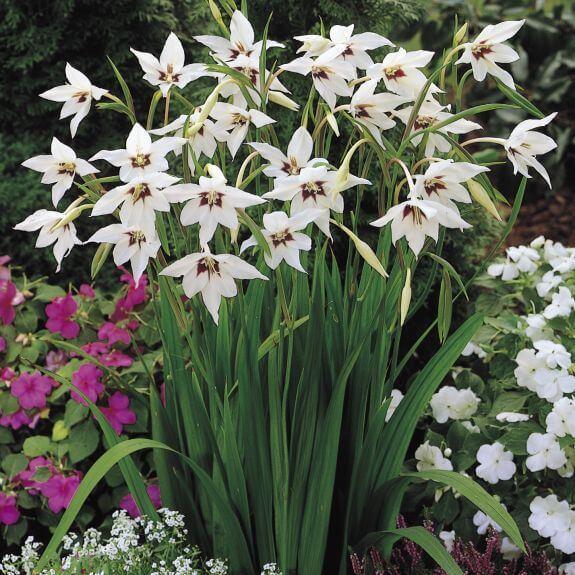
Reproduction of fragrant gladiolus
You can propagate a fragrant plant using seeds, daughter bulbs or babies. Using seeds is the least convenient method of propagation. In this case, flowering will have to wait a long time. The seeds can be harvested from dead plants or purchased from the store. In February, you can start sowing. For this, the box is filled with a substrate made from peat and sand.
Seeds are spread over the soil surface and sprinkled with soil. Moisten the soil with a spray bottle and cover the crops with a plastic bag. After the procedure, you need to put the container with future plants in a warm place.
The first shoots will hatch in 15-20 days. Fortified seedlings are planted in separate pots. Plants can be planted in open ground only after 2-3 years.Acidantera children are planted in the spring directly into the open ground. The planting depth for a miniature bulb is 5-9 cm. In the future, the care of plantings and adult plants is no different. Young plants bloom in 2-3 years. Acidantera are propagated with daughter bulbs in a traditional way. With the arrival of spring, the planting material is planted in a flower bed.
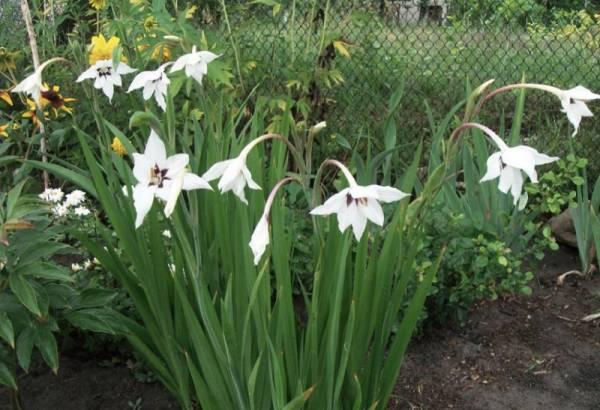
Planting a flower
The planting procedure is not fraught with any difficulties.
When to plant a plant?
Acidantera are planted in the second half of May. The main thing is to avoid the threat of spring frosts. The bulbs are planted in sun-warmed soil.
Site selection and preparation
Fragrant gladioli feel great in sunny, wind-protected areas and tolerate partial shade well. It is better to plant plants in light, well-drained, slightly acidic soil. The land must be carefully dug up and fertilized.

Landing technique
Before planting, the corms are soaked in a solution of fungicide or potassium permanganate. In the prepared soil, holes are dug 12-15 cm deep. A little river sand is poured at the bottom of the planting hole, and then an onion is placed. The planting is covered with fertile soil and moistened.
The distance between large tubers is 17-20 cm. A gap of 10-12 cm is left between medium-sized specimens. Skilled gardeners recommend germinating the seed before planting. This trick will help bring the flowering period closer. The procedure starts in March. For this, the bulbs are planted in a pot and germinated in a bright and warm place. In May, acidants are planted in open ground.
Plant care rules
Unpretentious acidants are content with little, but they still have some requirements.
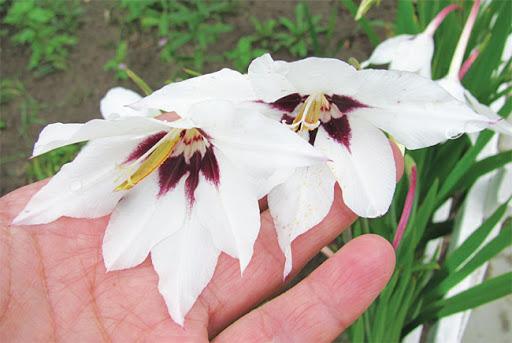
Regular watering
Like most tropical plants, fragrant gladiolus needs abundant watering. In hot weather, you need to closely monitor the condition of the soil at the roots of plants. Lack of moisture can cause tubers to dry out. For the well-being of acidants, 2 to 4 buckets per week are enough. Flowering plants are watered less frequently. This trick will help you correct the color of the flowers. Graceful acidants will acquire a rich shade. In order for the moisture to evaporate less, it is advisable to mulch the plantings.
Loosening and weeding
After each watering procedure, the flower bed is weeded and loosened. Till the soil carefully, trying to touch only the top layer of the soil.
Fertilization
Acidanters are fed every 2 weeks. Complex mineral fertilizer is applied to the soil. Top dressing is applied to moistened soil.
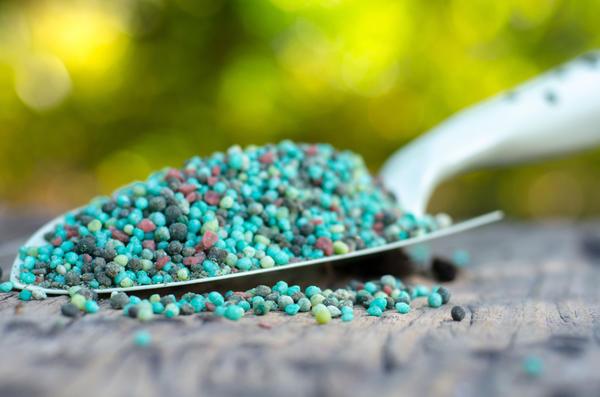
When purchasing fertilizer, you need to pay attention to the composition of the fertilizing. For example, a high concentration of ammonia in a product can lead to vigorous growth of leaves and peduncles, while the size of the buds remains small.
Wintering
African beauties are not adapted to severe frosts, so in autumn the bulbs are dug up and stored until spring. Plants are prepared for wintering gradually. Faded specimens are cut off, not allowing the resulting seeds to ripen. The bottom pair of leaves is left so that the bulbs can stock up on nutrients.
Disease and pest control
The "sharp flower" can be attacked by thrips and aphids. It will be possible to get rid of the trouble with the help of insecticides. There are many products on sale, for example, Actellik or Decis.
In rainy weather, the plant is annoyed by slugs. You need to fight enemies in the old proven way, collecting pests by hand. Acidantera often suffers from powdery mildew. You can cope with the problem with a fungicidal agent. For this purpose, it is convenient to use the Forecast preparation.

Cleaning and storage
As soon as there is a threat of frost, the tubers are removed from the soil and thoroughly dried for 3-4 weeks. Dry, clean bulbs are wrapped in newspaper and stored. Planting material can be stored in a pot or in a bag of peat. The main thing is that the room is warm and dry. Bulbs do not tolerate high humidity and low air temperatures. In this case, the planting material may rot. The optimum temperature for storing corms is 21-25 degrees.
Application in landscape design
Acidanters look harmoniously near the shores of artificial reservoirs and are able to decorate the front area at the entrance to the house. Fragrant gladioli are organically combined with stunted plants on the rocky ledges of an alpine hill. It is convenient to grow flowers in containers. Fragrant mobile flower beds can be moved to different parts of the garden.
